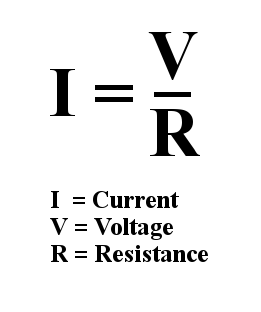Ohm's law stated that the current flowing through a circuit is directly proportional to the voltage applied to the circuit. This means that if the voltage of the circuit increases, then the current will also increase if the resistance stays the same.
Ohm's law also states that current flowing through a circuit is inversely proportional to the resistance of the circuit. This means that if the resistance of a circuit increases, then the current flow will decrease if the voltage stays the same.
The standard formula for Ohm's law states that the current is equal to the voltage divided by the resistance:

While the preceding formula is how Ohm's law is usually introduced, it really consists of three formulas:
I = V/R
R = V/I
V = I*R
In this book, we will use the R = V/I the most to calculate the resistance needed...



